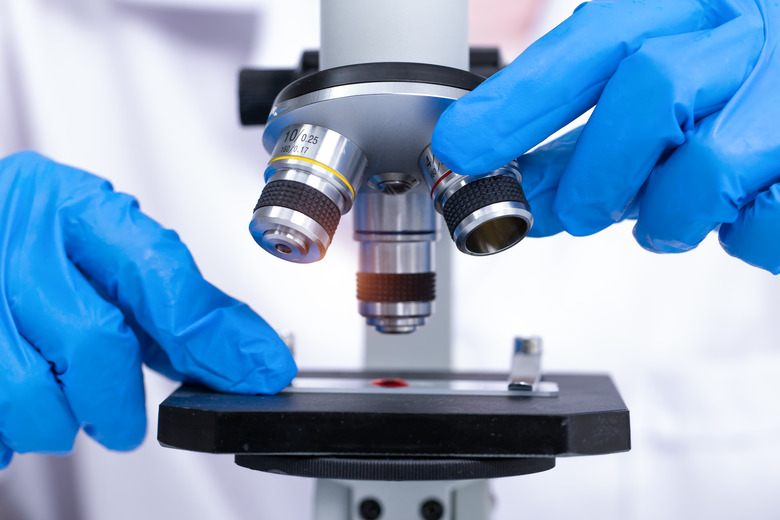Importance Of Aerobic Cellular Respiration
Aerobic cellular respiration is the process by which the cells of a living organism break down food and turn it into the energy they need to perform their essential functions. The importance of aerobic respiration in living things cannot be underestimated. Without this process, no living thing would survive.
Aerobic Cellular Respiration Process
Aerobic Cellular Respiration Process
Aerobic respiration is a series of reactions in which energy is released from glucose. Glucose and oxygen are used up and carbon dioxide is produced as waste. The cells of humans, animals and plants go through this process constantly, even when at rest. Most of the reactions take place within mitochondria, which are tiny objects inside the cell's cytoplasm.
In plants, the process of using light energy from the sun to convert carbon dioxide and water into food (glucose) is called photosynthesis. This happens in two phases. First, the compartments in the plant's cells called chloroplasts capture sunlight and store its energy in a chemical called ATP. Next, the ATP creates sugar and organic compounds, the foods plants need to live and grow. The first phase needs sunlight, but the second phases can happen without sunlight – even at night.
The Importance of Energy
The Importance of Energy
The world's main source of energy is the sun. Humans don't need direct sunlight to survive, but if we had no sunlight, there would be no life forms. Plants use sunlight to create their own food through photosynthesis, and are then eaten by animals who take that energy into their own bodies. Other animals then eat the plant-eating animals, passing the energy from one living thing to the next.
All forms of life need energy, from humans and animals to plants, fungi and algae. Energy released during respiration is used in several ways. For example, it may be used to create larger molecules from smaller ones, such as when plants make amino acids from sugars, nitrates and other nutrients, which are then used to make proteins.
Animals and humans use energy to contract their muscles to allow them to move. Energy also helps to maintain a steady body temperature.
Anaerobic Respiration in Humans
Anaerobic Respiration in Humans
Anaerobic respiration is another type of cellular respiration. Aerobic respiration needs oxygen, but anaerobic respiration does not. The importance of anaerobic respiration in humans relates to muscles during exercise. When the body doesn't get enough oxygen during exercise, it relies on anaerobic respiration for an energy supply.
Like aerobic respiration, anaerobic respiration also breaks down glucose, but it releases only around 5 percent of the energy released by aerobic respiration, per molecule of glucose. Instead of carbon dioxide and water, anaerobic respiration produces lactic acid.
Cite This Article
MLA
Gillespie, Claire. "Importance Of Aerobic Cellular Respiration" sciencing.com, https://www.sciencing.com/importance-aerobic-cellular-respiration-6376108/. 20 July 2018.
APA
Gillespie, Claire. (2018, July 20). Importance Of Aerobic Cellular Respiration. sciencing.com. Retrieved from https://www.sciencing.com/importance-aerobic-cellular-respiration-6376108/
Chicago
Gillespie, Claire. Importance Of Aerobic Cellular Respiration last modified March 24, 2022. https://www.sciencing.com/importance-aerobic-cellular-respiration-6376108/
